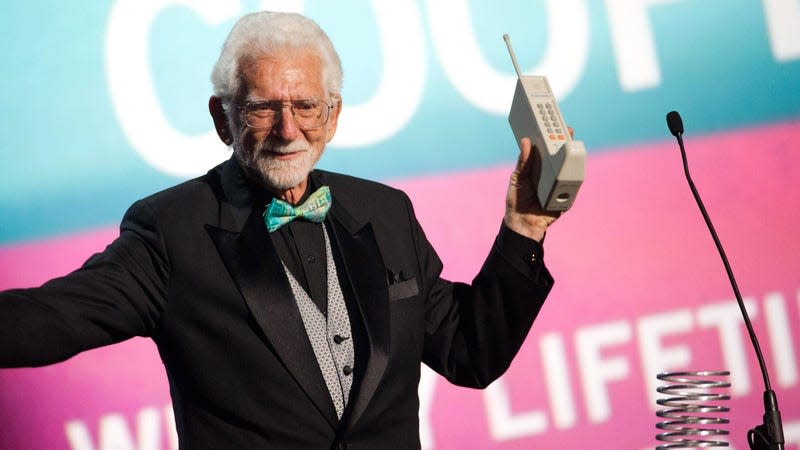Cellphone Creator Envisions a Future Where We Embed Phones in Our Ears

Cell phones are so ubiquitous now that it’s almost easy to forget we’re not literally attached to them. Your iPhone lives in your pocket, not your head. But Martin Cooper, the man credited with creating the first cellphone, thinks even that’s about to change.
“The next generation will have the phone embedded under the skin of their ears,” Cooper told CNBC at Mobile World Congress (MWC) in Barcelona on Monday. At 94 years old, Cooper attended MWC to receive a Lifetime Achievement award five decades after he made the historic first cellphone call from 6th Avenue in New York City.
Read more
These Winning Close-Up Photos Show Life That's Often Overlooked
Remembering Enterprise: The Test Shuttle That Never Flew to Space
“50 years ago was a really primitive time,” he told the outlet. “There was no internet, there were no large-scale integrated circuits, there were no digital cameras. The idea that someday your phone would become a camera and an encyclopedia had never entered our minds.”
However, he added, “We did know that connecting was important. And we did tell a joke, that someday when you were born, you would be assigned a phone number. And if you didn’t answer the phone, you were dead. So we just knew that someday everybody would have a mobile phone. And it’s almost happened.”
Now that Cooper’s cell-phones-for-all vision nears reality, the opportunities for technological advancement in cell phones seem endless, and now he’s suggesting that our bodies could be used as generators for cell phones. In other words, he thinks the energy we put out could be enough to operate a phone device implanted in the ear.
“Your body is the perfect charger,” Cooper told CNBC. “When you eat food, your body creates energy, right? You ingest food, and your body creates energy. It takes a tiny bit of energy to run this earpiece.”
Cooper’s notion that this could all become a reality is a far cry from the brick cellphone he invented, weighing about 2.5 pounds. The idea, he said, came from the Dick Tracy comic strip, which became popular in the 1940s and showed the protagonist using a two-way wristwatch radio.
He made the first call to his chief competitor, Joel S. Engel at AT&T on a Motorola DynaTAC 8000X cellphone, and just hoped it would work as he waited for Engel to answer the line.
Since that fateful day, consumers have seen cell phones advance to the all-in-one devices that are constantly by our sides. Despite our attachment to and reliance on our devices, Cooper said at MWC, “Between the cellphone and medical technology and the Internet, we are going to conquer disease.”
It’s a noble goal, but imagine having to get surgery every time you want to upgrade to the new iPhone? I suppose that wouldn’t stop some from saying “Shut up and take my money.”
More from Gizmodo
Sign up for Gizmodo's Newsletter. For the latest news, Facebook, Twitter and Instagram.

